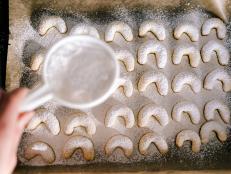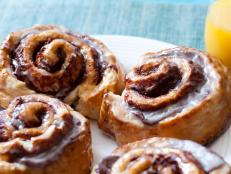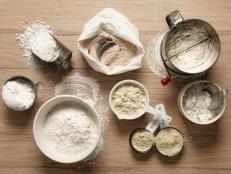How to Make Box Cake Better
We baked fourteen cakes to figure out the best tips and tricks — here are the five you should remember.

Michelle Warner
By Michelle N Warner for Food Network Kitchen
Box cake is dependable. Whether it’s yellow cake or chocolate cake, it has a flavor and texture you can count on. I’m partial to Duncan Hines yellow and chocolate boxed cakes because their products are richer in flavor than others. Their mixes also have a quintessential nostalgic “box cake flavor” that you can’t miss.
However, there’s always room for a little improvement. Do a quick Google search, and the Internet will provide you with many hacks to make box cake even better. But at Food Network, we like to make claims backed up by lots of testing. That’s why I baked yellow and chocolate cake mix fourteen (fourteen!) different times to bring you the very best tricks to make box cake better — whether you’re aiming for moister, richer, spongier, lighter or fluffier results.
What Are Usually the Ingredients in Box Cake?

Anouk de Maar/Getty Images
For starters, it’s helpful to know that the average cake mix calls for the flour mix (which often has flour, sugar, a leavening agent, and potentiall other flavors), water, 1/3 or 1/2 cup oil (depending on the brand) and 3 eggs. We will tweak that formula to achieve different results.
For Moister Cake: Add One Extra Egg
Instead of adding 3 eggs to your cake batter, add 4. The extra egg will add more fat, making for moister cake and a little extra structure — an important quality of a cake that you want to decorate.
For Richer Flavor: Swap Half the Vegetable Oil for Melted Butter
Before you swap all of the vegetable oil with melted butter for better flavor, you should know that oil helps to keep a cake super moist. I found if you want that deeper flavor, go for half oil and half melted butter. Melting the butter helps it combine more easily into the batter.

Michelle Warner
For Lighter, Spongier Cake: Substitute Mayonnaise for Oil
Mayo cakes were popularized during the Great Depression. These cakes typically substitute mayo for eggs to save money. However, if you keep the eggs and substitute equal parts mayonnaise for oil, the acidity in the mayo lightens the entire cake. Worried about tasting the mayo? Don’t. Its flavor is totally undetectable. If you’d prefer the spongy cake to be richer rather than lighter, substitute 1/2 cup whole milk for the water.
For a Flavor and Texture Similar to Pound Cake: Use Ghee Instead of Oil
If you’re going for a richly flavored cake that you can enjoy unfrosted or lightly frosted, substitute the oil for 3/4 cup ghee (also known as clarified butter). Ghee functions very much like oil because it has a high smoke point that maintains a moist cake and makes for less sponge. To really hit that sponge cake vibe on the head, use an extra egg (4 eggs total). Note that the cake might take 2 to 3 longer to bake.
For Fluffier, More Chocolatey-Tasting Chocolate Cake: Substitute Sour Cream + Melted Butter for the Oil
Instead of adding oil to the cake mix, add equal parts sour cream — plus 2 additional tablespoons of melted butter. The sour cream intensifies the chocolate flavor of chocolate cake while still keeping it light and spongy. The acidity in sour cream reacts with the baking soda in the dry mix, causing the cake to rise more than usual and convey textural fluffiness.
Related Links:



























.jpg.rend.hgtvcom.231.174.suffix/1681323015319.jpeg)






